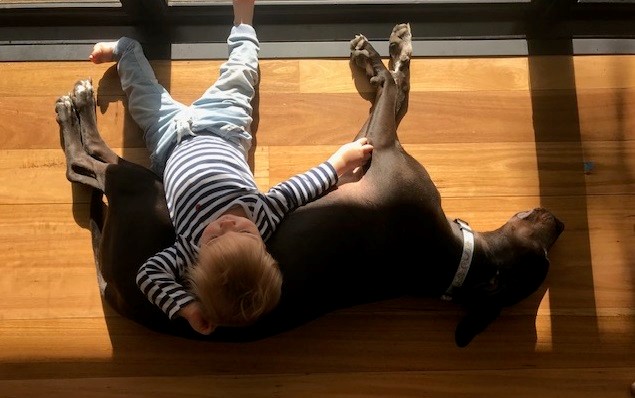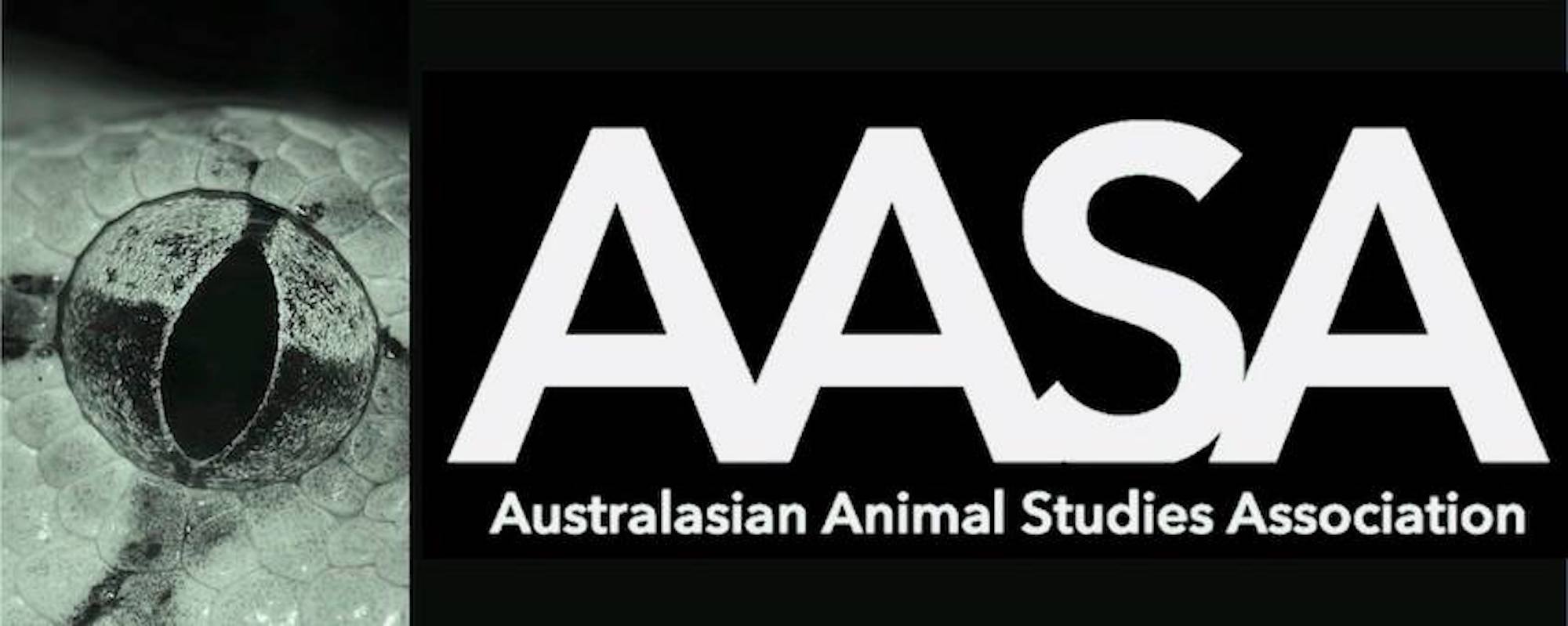Teya Brooks Pribac and Debra L. Merskin
How do we become who we are? How do we get to be the way we are within ourselves, for and to the rest of the world, and the way that world is (or is perceived to be) for and to us?
In this blog, we first look at developmental processes of becoming that humans share with other animals. We then turn to human re-presentations of nonhuman animals – mental constructions that may be a poor reflection of who these animals truly are but nevertheless fuel prejudice against, and promote separation from, them.

Genetic factors affect aspects of animals’ being and becoming. They determine whether we are born with blue, green, or brown eyes, curly or straight hair, as humans, cats, or cows, and many other distinctions. This is the so-called ‘nature’ part of our development. Then there is the ‘nurture’ part, which tends to aspects of our being and becoming that are more sensitive to and dependent upon the socio-natural environment we are embedded in.
Whether we belong to precocial or altricial species, that is, whether we are animals that are moderately independent at birth, such as sheep and geese, or completely dependent on the caregiver, such as rats and humans, a significant degree of critical development occurs after we are born (or hatched). Humans and many other animals are substantially dependent on the care we receive from others. This is not limited to food and physical protection; in the early period of life, in fact, our brain and our systems for biological and psychological regulation are still developing.
The primary caregiver (usually the mother but not necessarily) acts as an external regulator for the baby animal’s internal states – as a superstructure (Polan and Hofer 2016) that directs our responses to things that are happening inside-out. Through this, the caregiver influences the organisation of responses, moulding our own patterns of response and regulation that will then stay with us for quite a while, perhaps forever.
A caregiver that is able to soothe the infant’s negative states and boost positive ones will ‘teach’ the infant that it is possible to regulate negative emotions, leading, in the long run, to adaptive physical and mental health. Whereas inadequate regulation in this early period can compromise animals’ capacity for successful self-regulation later in life with adverse effects on physical and mental health (e.g. Schore 2005; Ehrlich et al. 2016).
In this intimate relational space our sense of self also emerges. ‘We first know ourselves as reflected in the other’ (Siegel 2011, 62): the feedback we get from the environment, including the way our primary caregiver responds (intentionally or not) to us, will shape much of the animal’s sense of self (i.e., the self that feels itself rather than the self that thinks itself), for better or for worse. These early interactions also set the pace for the way animals end up relating socially.
This is how animals come to be developmentally: the human, the dog, the chicken, the rat, and others. However, these parallels in becoming and being animal from a developmental perspective oftentimes disintegrate under the force of being and becoming animal as a human mental construct. The term ‘animal’ has come to be used as an insult to indicate the ‘worst of the worst’ of humankind, as the Western human embarks upon a project of unbecoming animal – or rather its re-presentation.
Young human selves are more open to cross-species as well as intra-species relationality: speciesism and racism are learnt. Tipper’s (2011, 58) study on human children’s best friends found that ‘children readily expressed affection for [nonhuman] animals, spoke about them as individuals, friends, and kin. Not only were children unashamed of these connections, but they spoke at length about [nonhuman] animals and frequently reoriented the interview discussion towards [them].’ Reflecting the developmental relational imperative, and before the adoption of arbitrary categories, such as ‘pet’, ‘pest’ and ‘food’ animal, human children tend to have a more immediate intersubjective connection with nonhuman animals. This connection remains, sometimes for a lifetime and for others until a point where they are told it’s time to ‘get serious’ about life, to focus on relationships with humans, as if that early connection is something to be left in the toy-box of one’s heart and mind.

Why is it that caring about nonhuman animals and prioritising them in our lives is something to get over or move past? Freud (1930) felt that it had to do with suppression of instincts and that until one is taught how to be ‘civilized’ and human, our animal natures will predominate. Yet what is lost when one unbecomes animal (or tries to)?
The attempted separation of the Western human from the rest of existence and its unguarded instrumentalisation has left us with both an ache in our intimate selves and a hurting planet. We remain embedded in life on Earth and dependent upon it perhaps more than we’re ready to admit. Exposure to vegetation alone has been shown beneficial (e.g. Koga and Iwasaki 2013), as have relationships with companion animals yet humans are tentative to admit the power of these relations unless questioned anonymously.
In part this could be attributed to the traditional belief, in the West, of human emotions being somehow different: complex, mature, even noble and divine, whereas other animals’ emotions are seen as lesser in all respects and not worthy of serious consideration. Even though we now know that these simplistic views don’t hold – what is a human emotion, Carl Safina (2015) notes, but an animal emotion processed through shared organismic infrastructure – the myth persists and so does the prejudice towards nonhuman emotions and those humans who take them seriously.
The long-standing practice, in research and media, to emphasise competitive and reproductive behaviours has also shaped our views of nonhuman animals, although friendly and cooperative interactions are more common (e.g. Innis Dagg 2011; Broom 2003): nonhuman animals and their societies are all but the instinctual, ferocious, uncultured, beasty phenomenon that plagues Western minds.
What we witness in photography, written stories, films and advertisements are not real individuals, rather they are re-presentations of them (Hall 2013). These re-presentations are substantially dependent upon the re-presenter’s cultural/personal context but impact what those who have little to no first-person experience with the animals in question think they know about them. If, for example, we only know wolves through media portrayals (generally as evil and violent) this will impact attitudes toward them, influence policy and laws, as well as any success conservation groups can have when advocating for them. This principle also applies to how we may think of human animals of a different race, religion, gender, or sexuality if the only way one comes to know them is via media and other forms of re-presentation.
It is perhaps time to relinquish attempts at unbecoming, and, in remembering our shared becomings, focus instead on re-imagining and undoing. Our body/mind is incredibly plastic. There is always room for change. ‘It is never too late,’ in words attributed to Mary Ann Evans (aka George Eliot), ‘to be what one might have been.’
Teya Brooks Pribac, PhD, is an independent scholar and multidisciplinary artist. Her book Enter the Animal: Cross-Species Perspectives on Grief and Spirituality is forthcoming from Sydney University Press.
Debra Merskin, PhD, is Professor of media studies in the School of Journalism and Communication at the University of Oregon. Her research focuses on how the media and popular press represent animals, resulting in species stereotypes, and how these portrayals affect the lived experiences of real animals. Her most recent book is Seeing Species: Re-Presentations of Animals in the Media & Popular Culture (2018, Peter Lang).
REFERENCES:
Bowlby, John. Attachment and loss: Volume II: Separation anxiety and anger. Basic Books, 1973.
Broom, Donald M. The evolution of morality and religion. Cambridge University Press, 2003.
Cassidy, Jude and Phillip R. Shaver (Eds.). Handbook of attachment: Theory, research, and clinical applications, 3rd edition. The Guilford Press, 2016.
Ehrlich, Katherine B., Gregory E. Miller, Jason D. Jones and Jude Cassidy. ‘Attachment and psychoneuroimmunology.’ Handbook of attachment: Theory, research, and clinical applications, edited by Jude Cassidy and Phillip R. Shaver, 3rd edition. The Guilford Press, 2016, pp. 180–201.
Freud, Sigmund. Civilization and its discontents. Dover, 1930.
Hall, Stuart. Representation: Cultural representations and signifying practices. Sage, 2013.
Hofer, Myron A. ‘Relationships as regulators: A psychobiological perspective on bereavement.’ Psychosomatic medicine, vol. 46, no. 3, 1984, pp. 183–197.
Innis Dagg, Anne. Animal friendships. Cambridge University Press, 2011.
Koga, Kazuko and Yutaka Iwasaki. ‘Psychological and physiological effect in humans of touching plant foliage – using the semantic differential method and cerebral activity as indicators.’ Journal of physiological anthropology, vol. 32, no. 1, 2013, doi: 10.1186/1880-6805-32-7.
Merskin, Debra L. Seeing species: Re-presentations of animals in media & popular culture. Peter Lang, 2018.
Polan, H. Jonathan and Myron A. Hofer. ‘Psychobiological origins of infant attachment and its role in development.’ Handbook of attachment: Theory, research, and clinical applications, edited by Jude Cassidy and Phillip R. Shaver, 3rd edition. The Guilford Press, 2016, pp. 117–132.
Safina, Carl. Beyond words: what animals think and Feel. Henry Hold and Company, 2015.
Schore, Allan N. ‘Attachment, affect regulation, and the developing right brain: Linking developmental neuroscience to pediatrics.’ Pediatrics in review, vol. 26, no. 6, 2005, pp. 204–217.
Siegel, Daniel J. Mindsight: the new science of personal transformation. Bantam Books, 2011.
Tipper, Becky. (2011). “‘A dog who I know quite well”: Everyday relationships between children and animals.’ Children’s Geographies, vol. 9, no. 2, 2011, pp. 145-165.



